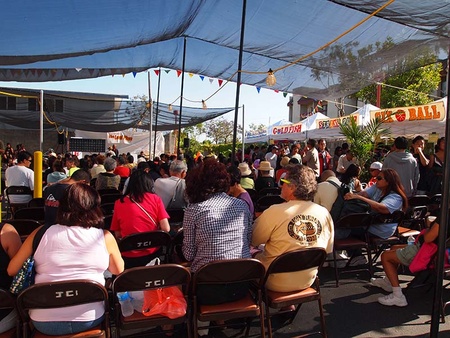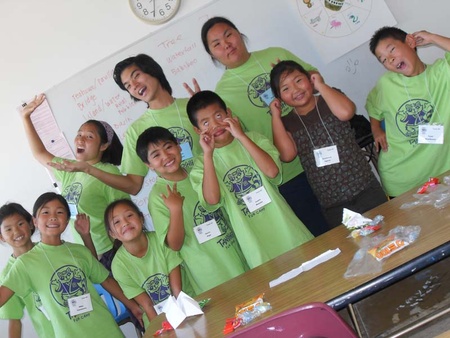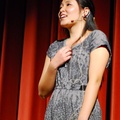The Gardena Valley Japanese Cultural Institute (GVJCI) is a non-profit community organization in Gardena, CA that caters to the Japanese American community in the South Bay of LA. Their mission is to “serve the needs of the local Japanese American community through educational, cultural, and social programs that share the Japanese and Japanese American cultural heritage.” Classes and programs are offered to participants ranging in age from children to seniors, where you can learn how to become a kendo master, jam with fellow ukulele students, or brush up on your Japanese speaking skills.
Spending so much of my life being a part of the GVJCI, especially in the last 10 years since my mom started working there, I’ve really come to appreciate what an integral part of the community this center is. At first glance, you have no idea how much unacknowledged, hard work actually goes into running a non-profit organization. It’s not until you get the chance to go behind the scenes that you realize the extent of effort that goes into operating this institute so smoothly.
I think the best part of working and volunteering at the GVJCI is the fact that I am surrounded by people who are passionate and whole-heartedly dedicated to the livelihood of this indispensable community center. I’ve come to acquire, by their example, the work ethic and take-initiative approach that are essential qualities in life. The immensity of their hearts and the joy and laughter that I witness every time I come to the GVJCI continually inspire me, which subsequently became one of the reasons why I decided to apply for the Nikkei Community Internship this summer. It’s because people need organizations like these to bring them together and teach them about their cultural history and heritage along with passionate community leaders who always strive for improvement. I want to make sure that places like these are still around when I enroll my kids in summer camps and even when I become a senior looking for exercise classes to attend during the week. Its walls emanate that feel-good, comfortable, and welcoming community vibe that I have grown to miss while away at school.
What I miss is being a part of a community, a small piece of a magnificent puzzle. You know, the adorable seniors who always offer you food and joke around with you, the little kids whom you’ve coached in basketball or mentored as a summer counselor who give you big hugs whenever you happen to run into them, the extended network of aunties and uncles that have your back, and of course your friends whom you’ve known since you were babies. It’s one of those things that you don’t realize how amazing it actually is until you don’t have it anymore. JCI, like all the other Japanese American community organizations, has built a home around me, whose walls are networks of support, whose floor is my foundation, and whose roof is the shelter and safety I feel being a part of something much greater than myself.
More specifically, the JCI has taught me the significance of volunteerism. Because it is a non-profit organization, many of the people you see running around or teaching are volunteers who are here because they love what they do and want to help out. The JCI would literally fall apart without them. I cannot express the respect and gratitude I have for these volunteers, especially those who have full time jobs and families to take care of, who selflessly give their time for the benefit of the community.
Most of my favorite memories have been during the annual JCI Carnival. Not just attending the carnival, but being a part of its set up and function, running around and always trying to figure out new ways to make it even better the following year. It’s just a great place with great food and entertainment for people of the community to get together and catch up. This is the only place where I run into old softball buddies, fellow Girl Scout troop members, former basketball teammates and kids I’ve coached, friends from church, kids that I’ve mentored from camp, and family members who come out to support all in a span of two days. I don’t think you can say that about very many places. I don’t know who started this system, but I think it was a brilliant idea to require the local sports, boy/girl scouts, church, and art organizations to work a shift because in a community, like in a relationship, you give and take and help each other out.
On the other hand, I feel like many people primarily stop by the GVJCI for its annual carnival, but don’t exactly take advantage of all it has to offer throughout the year. The GVJCI has provided me with a cultural home within the greater community. I’ve basically grown up here. This is where I learned how to break out of my shell when it comes to dancing in public, where I had my first job as an office assistant, and where I discovered what it meant to be a mentor. It doesn’t get any better than that. What I love about JCI is how welcoming and inclusive it is. While it does provide a safe, cozy home for Japanese and Japanese Americans to feel comfortable and connect with other people of the same background, its programs are not limited to people who are Japanese or of Japanese descent. It encourages and invites people of all ethnicities to dive in and experience the Japanese culture and spread cultural awareness, which in turn, is the driving force for increased tolerance.
Another part of the GVJCI’s mission statement includes, “striving to create an environment for better inter-generational understanding, for perpetuating the ethnic heritage of Americans of Japanese ancestry, and for promoting cultural pride and respect for all humanity.” As a TANOSHII Fun Camp counselor for the past three years, I have experienced first hand what this means.
By teaching the kids about different Japanese American values, the incarceration of persons of Japanese descent during World War II, and what it means to be Japanese American, I have reached a better understanding of my own cultural identity. When you’re a kid, you don’t really think about why you practice certain traditions or why you eat different foods from your friends, you just kind of go with the flow without questioning it. However, as you get older, these differences among cultures sometimes become more apparent. As a fourth generation, Yonsei, on my dad’s side and fifth generation,Gosei, on my mother’s side, I started to wonder what exactly is it that makes me Japanese American? How much of your cultural heritage is lost after each generation succeeding your immigrant ancestors and what can we do to preserve these traditions? That’s when I realized that there is a distinct cultural difference between being Japanese and being Japanese American. We have our own heritage, values, and history that should be shared as well. Be that as it may, I think that the TANOSHII Fun Camp does a great job of educating and informing the children about their cultural background.
So for those of you out there who have not visited the Gardena Valley Japanese Cultural Institute, I highly encourage you to check it out. Maybe even sign up for a class. I guarantee you will meet some awesome people and might even find that special niche that you’ve been looking for.
For more information, you can visit the website: http://www.jci-gardena.org/
1964 West 162nd Street
Gardena, CA 90247
Phone: 310-324-6611
Email: info@jci-gardena.org
GVJCI Hours: Monday through Friday 9 AM-5 PM
* To learn more about the JCI Carnival, check out Maya’s Nikkei Album “Gardena Valley Japanese Cultural Institute Carnival 2011” >>
© 2011 Maya Kochiyama







